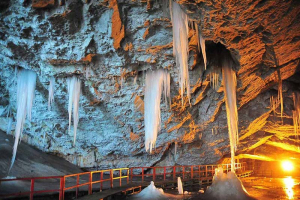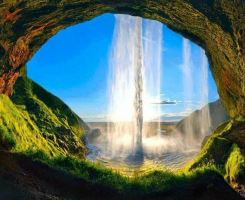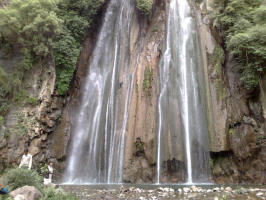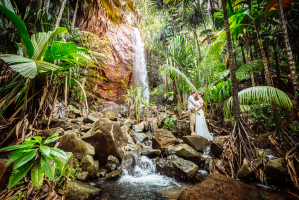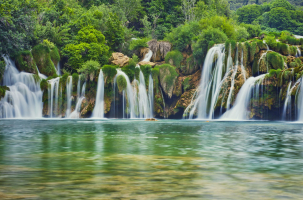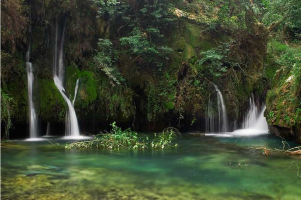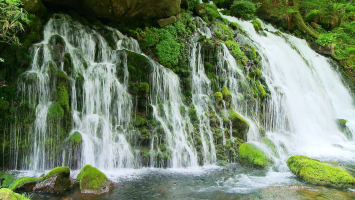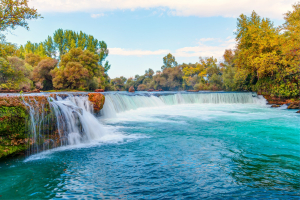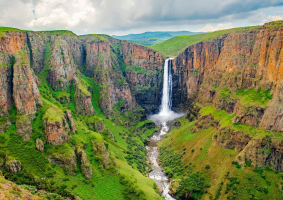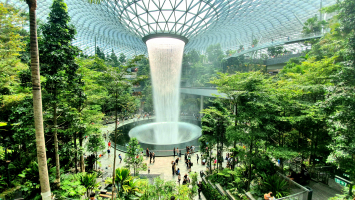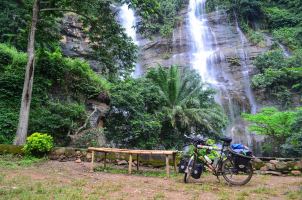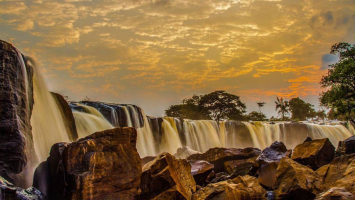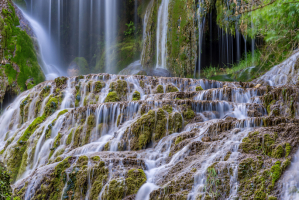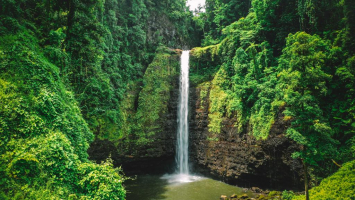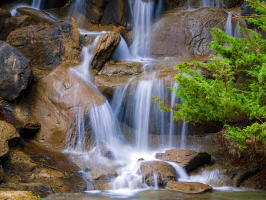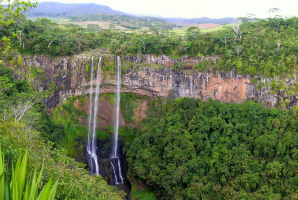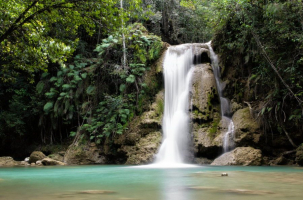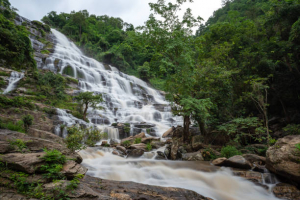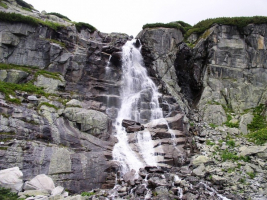Top 10 Most Beautiful Waterfalls in Romania
Every visitor should visit Romania to take in its natural splendors; it is a stunning nation. Falls are obviously among them. Like waterfalls, hardly many ... read more...natural landmarks evoke both power and beauty. Waterfalls are intriguing; you may sit and watch them for a while while experiencing an ephemeral happiness that is frequently difficult to describe. Although Romania lacks a Niagara Falls, individuals who like trekking in the outdoors are aware that the nation is home to several stunning waterfalls. Here are Romania's most breathtaking waterfalls.
-
Bigăr Waterfall is a protected area in the Anina Mountains of Caraş-Severin County in southwest Romania. Locals refer to it as "Coronini" and "the marvel from the Minis Canyon". It's unusual that the waterfall is situated precisely on 45 Parallel. Nearly eight meters high, the moss-covered Bigar waterfall is there all year round. It is regarded as Romania's most stunning waterfall. The waterfall is directly on the route between Anina and Bozovici, making it quite simple to find. The parking spaces are packed with automobiles on busy days. The so-called natural park has a 5 lei entrance fee. Both the top and the base of the "mushroom" may be used to picture the waterfall.
The subterranean spring flows into the Minis River from the cave above. This intriguing waterwork, unlike other roaring falls, runs over the top of a large, rounded stone and is redirected into a sheet of several little streams that emerge from the stone's base and protrude over the basin below. Even though the area has been formally protected since 2000, it is now easier than ever for anyone who want to see the park's splendor firsthand. Additionally, the number of plants and animals that live in the park has increased as a result of conservation initiatives.
Location: Fagaras Mountains, Sibiu County, Romania
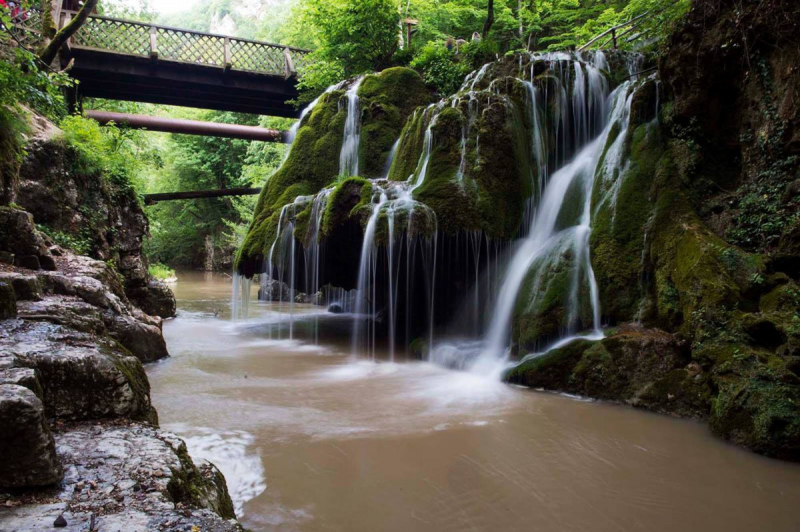
Pinterest 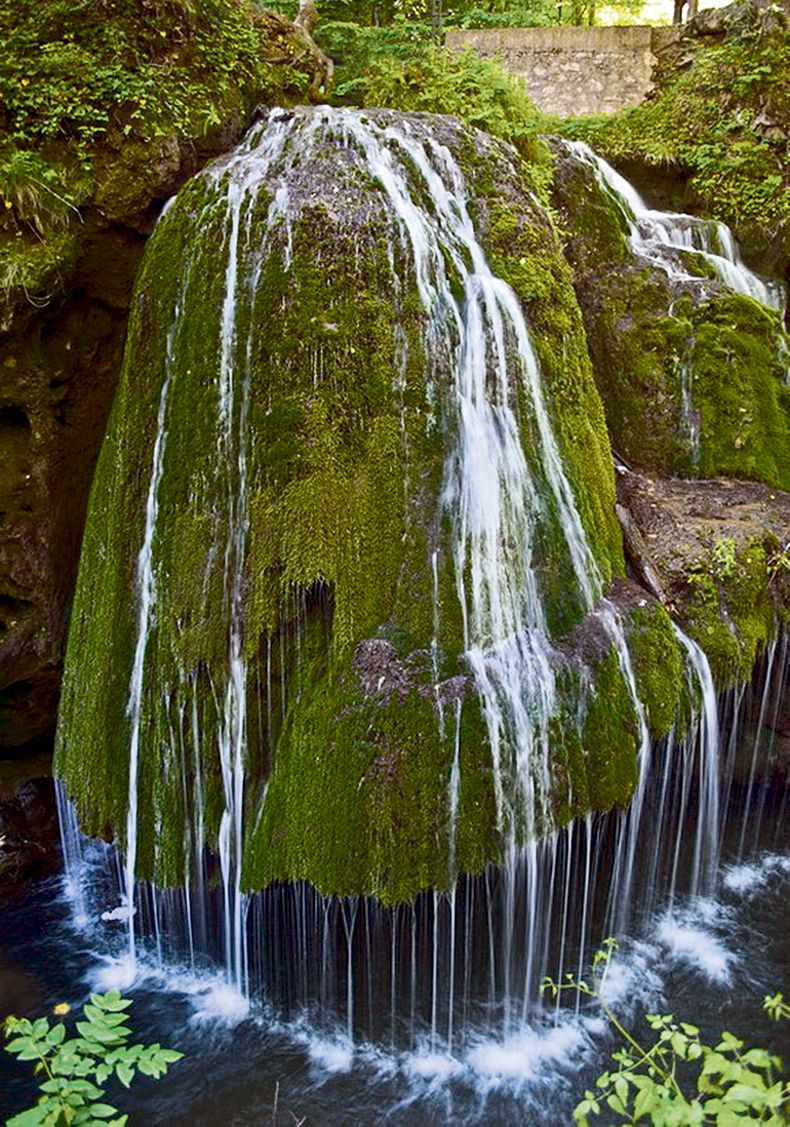
Pinterest -
A waterfall called Cascada Cailor, also known as Cascada Izvorul Cailor, is 100 meters high and descends the mountains in three steps. The waterfall lies 3 kilometers from Borsa Resort in the Piatra Rea Natural Reserve, at an elevation of 1300 meters. The waterfall originates from the Podul Cailor plateau and is created on the Fantana (or "Well" in Romanian) creek. An old myth states that the waterfall got its name because of an event that happened here many years ago. On the edge of the abyss where the waterfall begins, it appears that during a storm, a bear surrounded a herd of horses. Due to low vision and extreme fear, the horses leaped into the abyss and perished.
To access the Cailor waterfall (also known as the Horses' waterfall), one must first go to Borşa, a popular vacation spot in Maramureş County's eastern region close to the Rodnei Mountains National Park. Since there are numerous excellent slopes nearby and a natural trampoline (90 m long) for those who dare to "fly" on skis, Borşa is particularly beloved among winter sports lovers. Otherwise, there are several hotels and guesthouses, and summer is often calm.
There are two ways to go to the Cailor Waterfall in Borşa, more specifically from the Tourist Complex, which is located at an elevation of 1300 m. If your legs are strong, you may use the chairlift, which runs both in the summer and the winter, or you can walk the path indicated by a red triangle for around two hours (its schedule starts at 9 am, the last ride being at 5 pm). If you go with this choice, it will still take you around 20 minutes to walk through the forest to get to the waterfall that has the greatest falls in Romania: 90 meters, dispersed over numerous steps.
Location: Piatra Rea Natural Reserve, Romania
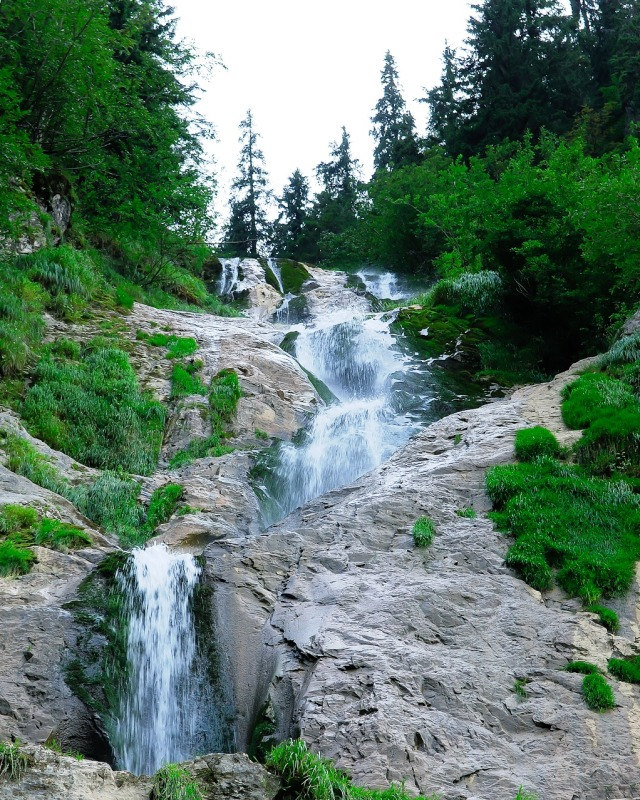
Tumblr 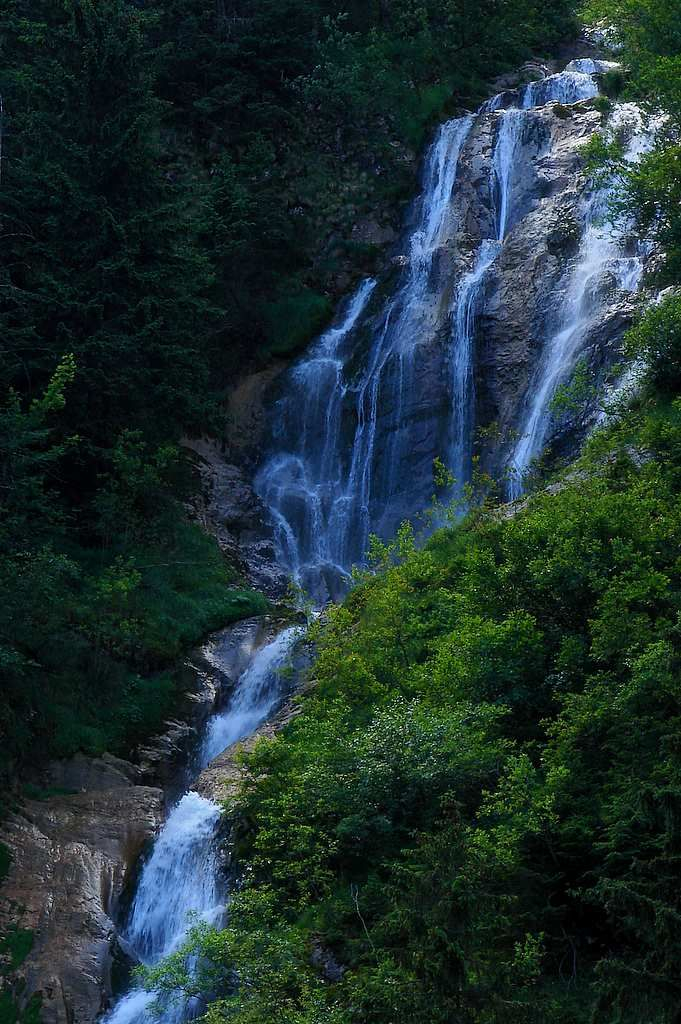
Pinterest -
One of Transylvania's most stunning waterfalls is Vălul Miresei, sometimes referred to as Rachitele Waterfall. The Vălul Miresei Waterfall, also known as Răchițele after a section of the same-named town that is a part of the commune of Margău, is one of the most stunning waterfalls in Romania and is located on the edge of the Apuseni Mountains Natural Park, in the Stanciului Valley. Its fan-like form provides the appearance of a wedding veil (actually, this is the meaning of its name). The waterfall rises to a height of 34 meters at its peak.
Climbing is done in the region during the winter when the river freezes. According to legend, the waterfall got its name when a bride once fell from the rocks and her veil got trapped between them. The waterfall was created by the sad bride's tears. The more daring can ascend all the way to the top of the falls, where they can be sure of a breathtaking panorama. The little river and Hell's Valley converge at the base of the falls. To ensure you get absolutely stunning photos, Toplist highly advises visiting this waterfall during the rainy season when the debit is higher and the sky is cloudier.
Location: Apuseni Mountains, Cluj County, Romania
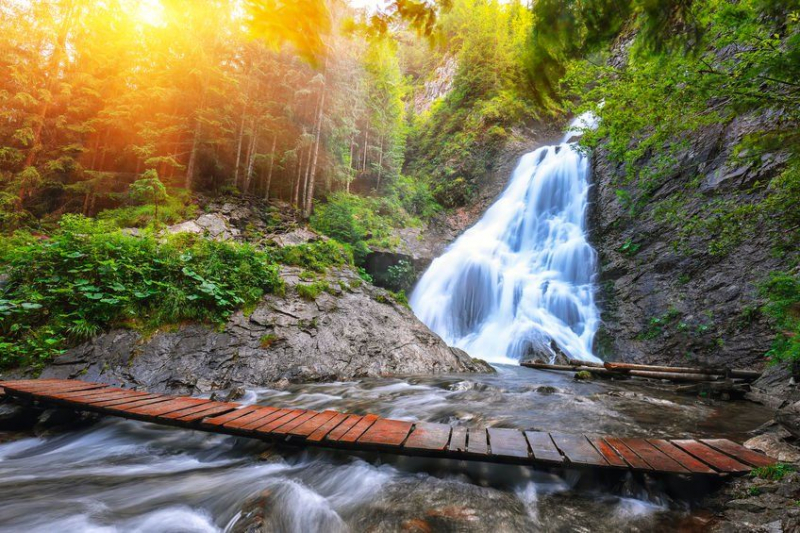
Pinterest 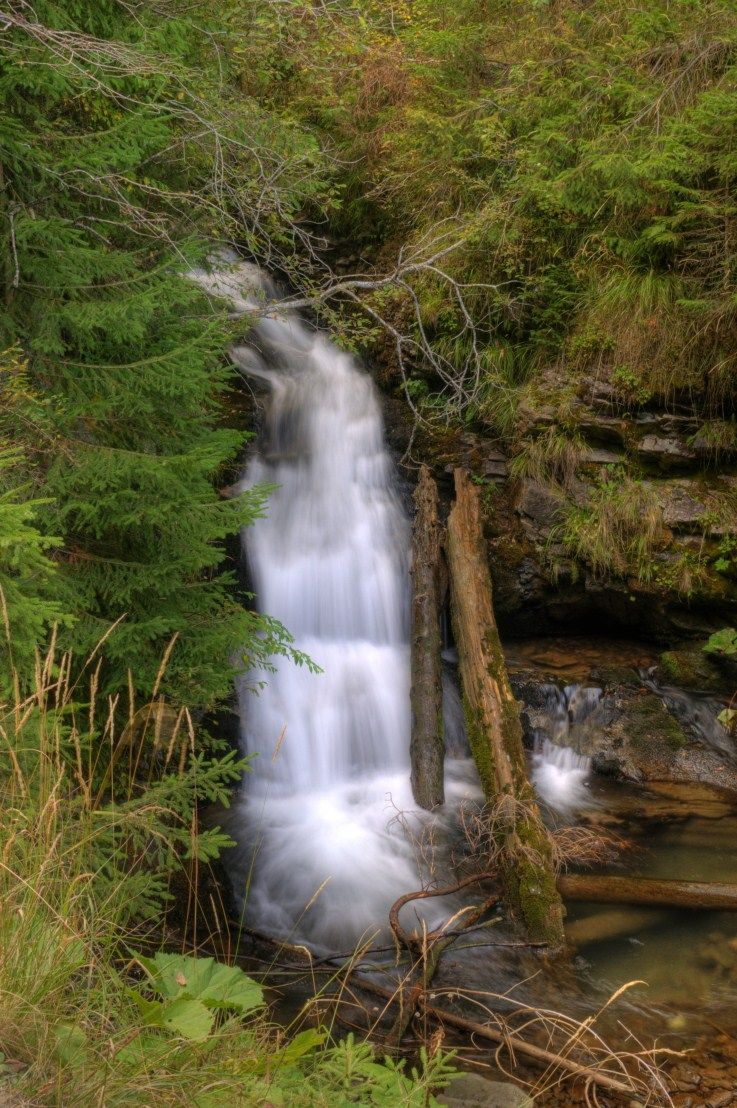
Pinterest -
The waterfall Beușnița is located in the Cheile Nerei - Beușnița National Park, a short but steep hike from the crystal-clear lake Ochiul Beiului. Even more beautiful, in my opinion, than the well praised Bigăr, which hasn't had the good fortune to gain as much attention, despite the fact that it should. If you climb to the well-known Ochiul Beiului lake, you should carry on following the blue triangle to the Beusnița waterfall, which will take you around 30 minutes of easy walking.
Over time, several formations that gave rise to waterfalls were created by the limestone that was dissolved by the Beu (Bei) river's water. The most impressive is around 15 meters high and coated with moss. It is ideal to visit in the spring when the river is at its fullest in order to marvel at its exquisite splendor. The Beusniţa is likely to be dry throughout the summer months, with only a few trickles of water trickling down its rocks. However, you won't regret making the trip there since the caves that the water has cut into the limestone also make excellent photographic subjects.
Location: Cheile Nerei-Beusnita National Park, Caras-Severin County, Romania
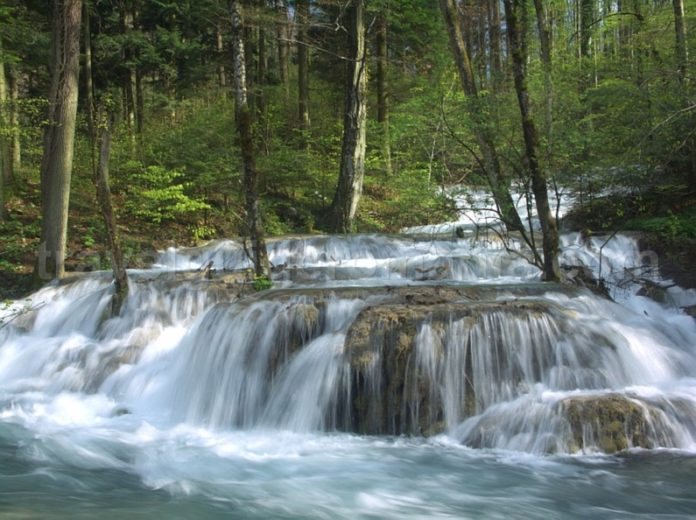
Pinterest 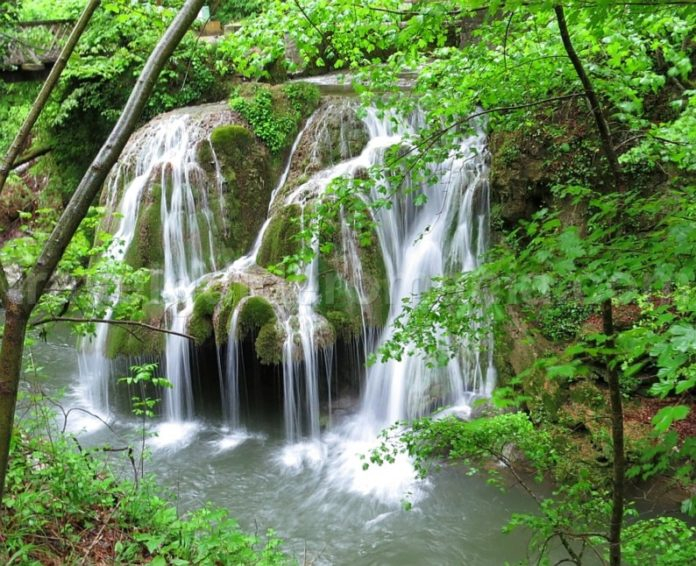
Pinterest -
The Urlătoarea waterfall (The Howl), which was created on the same-named creek close to Buşteni at an elevation of 1100 m, is one of Romania's most easily reached and popular waterfalls. From the town of Buşteni, one may easily stroll to the Urlătoarea (to the left of the cable car, on the forest road – red point). Additionally, a road constructed at King Carol's initiative, Poiana Apului (depicted with a blue dot), leads to the waterfall. Naturally, the noise it generates is what gave the place its original name, which translates to "howling waterfall." The waterfall is quite deep and rises to a height of 15 meters, especially after the winter snow has melted. Tourists who are wandering by can recognize it quickly.
The Howl, which rises to a height of 15 meters, earned its name from the loud noise the water made as it fell steadily, especially in the spring and fall. On her horseback excursions, Queen Mary frequently made it to this waterfall, stopping to rest on a nearby rock. The Great Howl and the Little Howl are two lesser waterfalls that are located above the main waterfall. Not to be confused with Vama Buzăului's Urlătoarea waterfall.
Location: Buşteni, Brașov county, Romania
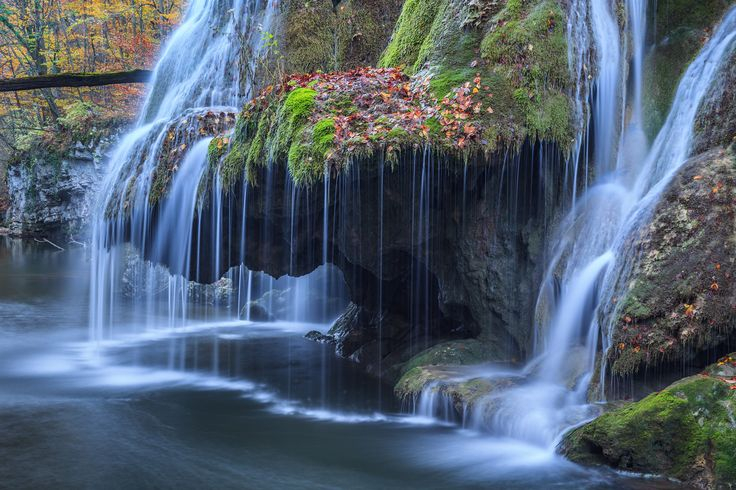
Pinterest 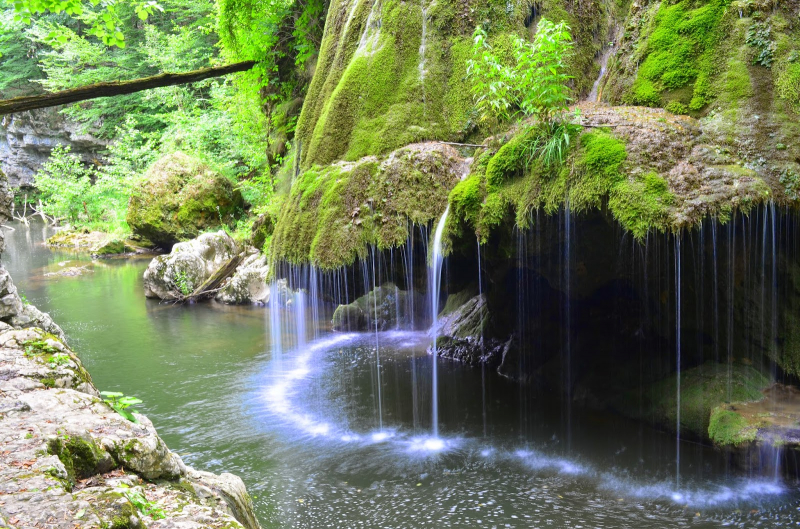
Pinterest -
Serbota Waterfall, one of the most stunning in the Fagaras Mountains, is less well-known than the well-known Bâlea. The 20-meter-high waterfall, which can only be reached on foot, is situated nearby Negoiu Hut at a height of 1,400 meters. With a 60-meter cascade, the Bâlea waterfall, also known as the "Urlătoarea Bâlei", is the largest stepped waterfall in Romania. The Bâlea Waterfall may be accessed by travelling the renowned Transfăgărășan road to Lake Bâlea and then walking for up to an hour. It is situated in the Făgăraş Mountains, at an altitude of 1200 m, between the peaks of Negoiu and Moldoveanu. The cable car ride up to Bâlea offers another opportunity to view the cascade.
The Bâlea waterfall is breathtaking in its size and splendor. The waterfall draws visitors throughout the year and completes Transfagarasan's enthralling environment. The water is extremely cool, icy, and clear. The waterfall includes several hiking trails and a fresh picnic area. Both in the summer and in the winter, the mountaintop scenery created by the lake is very beautiful. It creates the perfect setting for relaxation while taking in the breathtaking vista of the glacier valleys and mountain ridges that surround it.
Location: Făgărașului Mountains, Romania
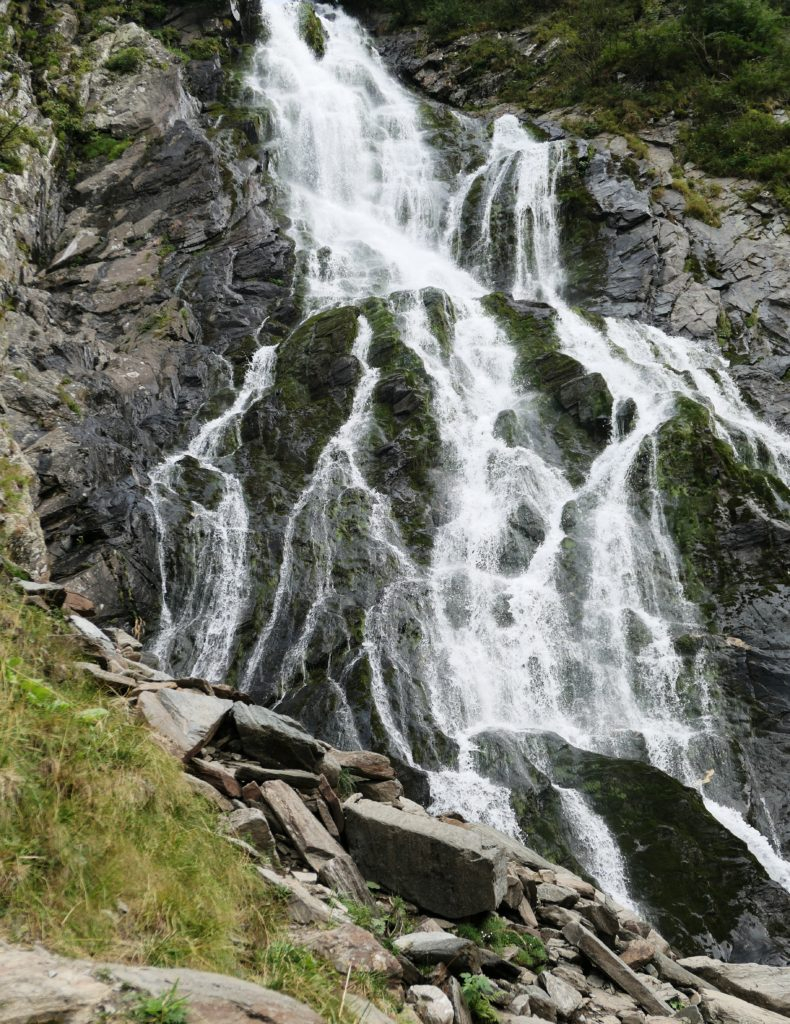
aussietrailwalker.com 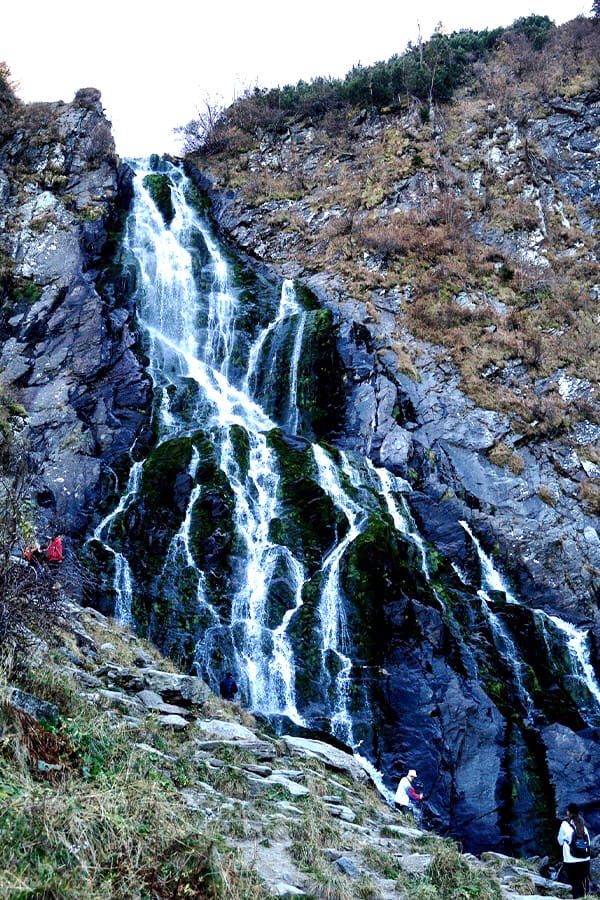
wandering-bird.com -
The Capra Waterfall, also known as Iezerului Waterfall, is situated close to the 2000 m height mark, close to Transfăgărăşan, on the southern side of the Făgăraş Mountains. The Capra waterfall, which has a drop of more than 40 meters, only freezes during particularly severe winters due to the tremendous water flow. From the bridge in front of the waterfall, a sizable number of people may observe it at any time of year.
It is 35 meters high, rises from Lake Capra (2241 meters above sea level), and is one of the Transfăgărășan Road's "stars", appearing in photographs taken by tourists who pause by the highway to admire the stunning waterfall. Capra has a fairly strong water flow, which accounts for the fact that it seldom freezes over during the winter. The Bâlea waterfall is breathtaking in its size and splendor. The waterfall draws visitors throughout the year and completes Transfagarasan's enthralling environment. The water is quite chilly, frosty, and transparent. The waterfall has many hiking routes and a fresh picnic spot. In addition to the unique experience of the waterfall, those who are more daring have the option of cliff diving off the nearby rocks into the deep recesses of the lake. The lake's cold, clean mountain water seems like the perfect treat after the walk.
Location: Făgăraş Mountains, Romania
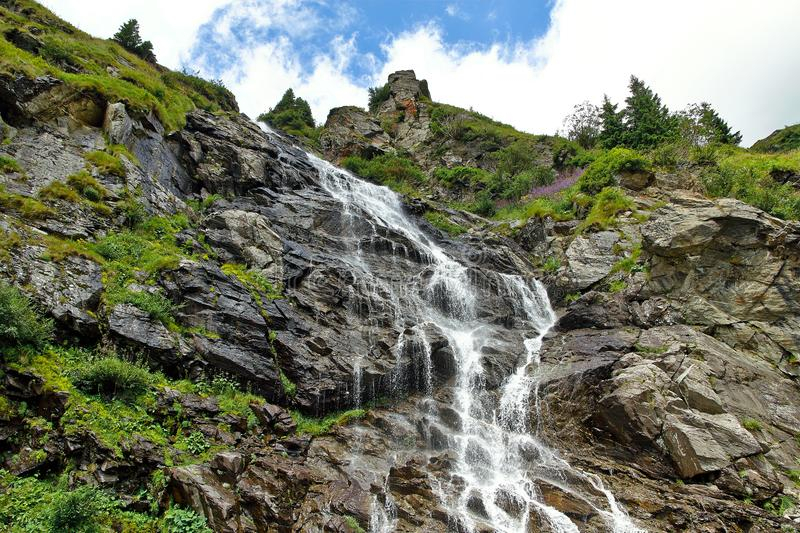
dreamstime.com 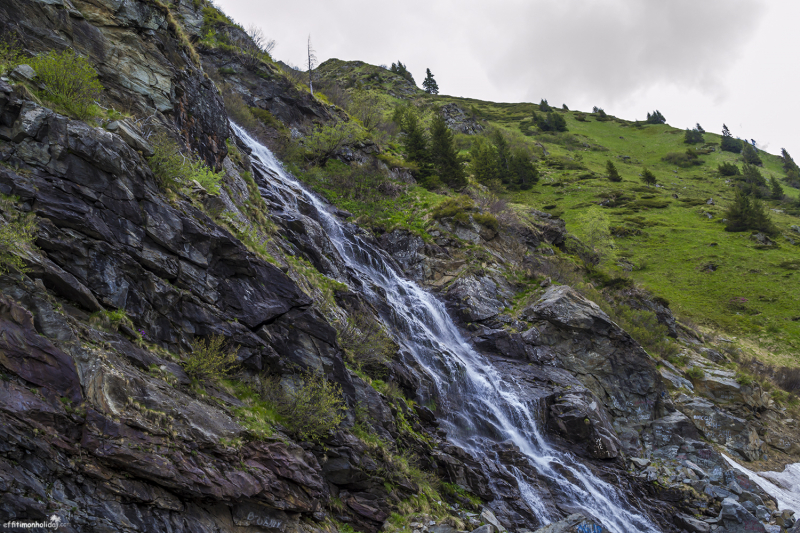
effitimonholiday.com -
The Buciaș Waterfall, which is a component of the Buciaș Nature Reserve, is situated 25 kilometers from the town of Oneşti, close to the settlement of The Cașin Monastery. The Buciaş Brook, a tributary of the Caşin River, follows the path of the waterfall. It is the biggest waterfall in Bacău County, rising roughly 15 meters. Another, less well-known waterfall named the Dead Girl Waterfall is produced by the same upstream watercourse. The chamois, a protected species and one of our country's most valuable animals, was naturally established in this region.
A Romanian tributary of the Caşin River is the Pârâul Buciaş. There are two magnificent waterfalls in the valley of this watercourse. After approximately 40 minutes (2.5 km) of travel from the Buciaș Forest canton upwards down this stream's valley, we arrive to the Buciaș Waterfall, the largest and most stunning waterfall in Bacău County. Several chamois (the only ones in the county) took refuge in this region, which has been designated a natural reserve. Out of the extremely few visitors who come to this region, the most of them stop here, which is a shame.
Location: Buciaș Nature Reserve, Romania
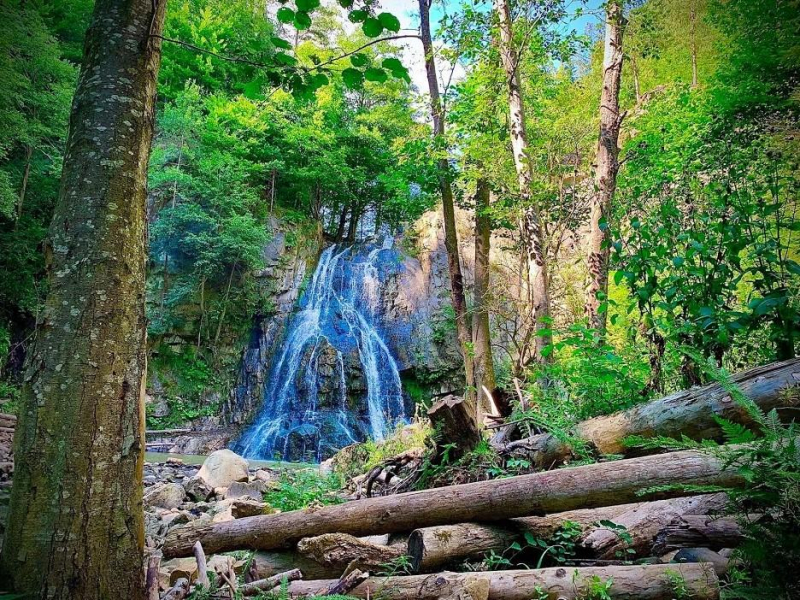
myonesti.com 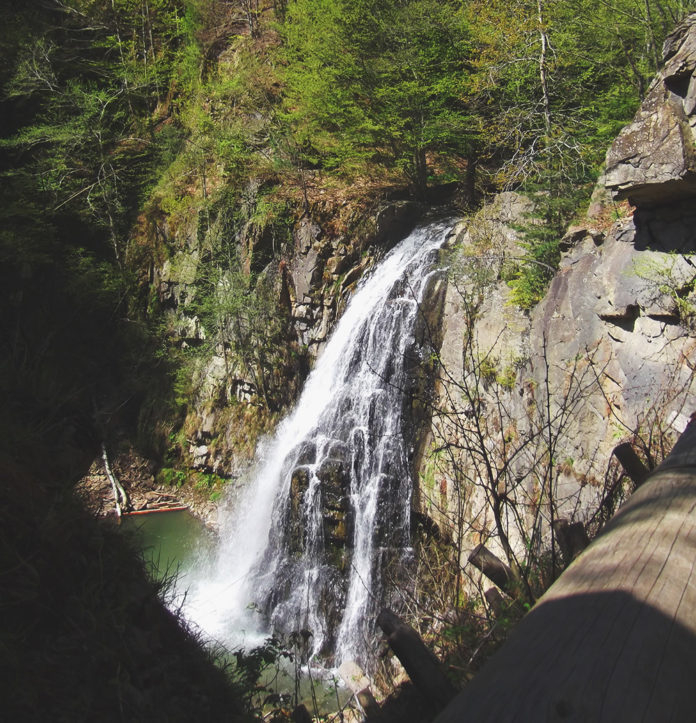
comunitatea50plus.ro -
The Pruncea Waterfall, which is six meters high, lies tucked away in the Siriu Hills on the steep slopes of Podul Calului (Bridge of the Horse). You will come upon a distinctive natural setting with lush vegetation and waterfalls a few kilometers down the mountain route. The Siriului Dam is 5 kilometers from Pruncea Waterfall (also known as Cascada Caşoca, from the name of the mother river). And it's simple to get there: just turn right along the road heading to Cabana 14 Scaune two kilometers before the dam, then travel another two kilometers down the Cașoca River until you arrive at the waterfall.
Pruncea is a little waterfall that is just 5 meters high, but because of the surrounding wilderness, it has a unique appeal. Additionally, there is a mythology that centers on the cunning bandit Negoiță Gheorghelaș, a local version of Robin Hood who served in the armies of the illustrious Tudor Vladimirescu. Prior to giving the items to the poor or splitting them with his outlaws' brothers, Gheorghelaş used to rob the local landowners and hide the stolen things in the cave near Pruncea waterfall. Squire Macovei tricked Gheorghelaş into falling from a cliff close to the waterfall.
Location: Siriu Hills, Romania
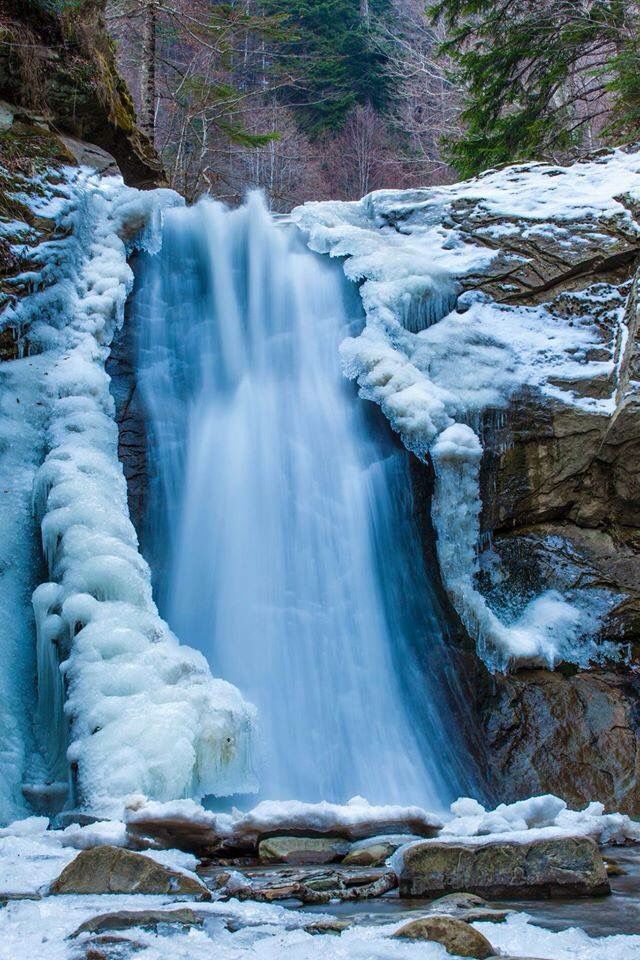
Pinterest 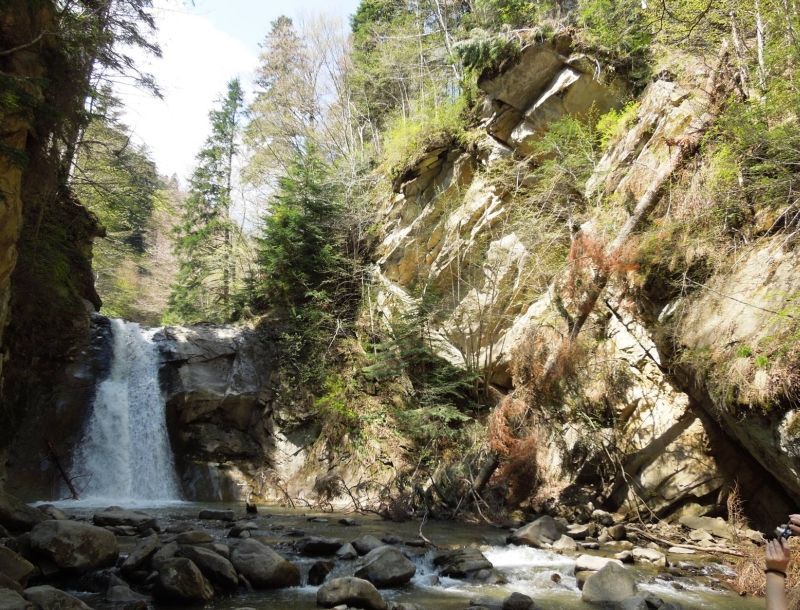
-
The Șușara waterfall, another stunning natural feature in the Caras county, can be found on the shortest route (blue cross), which leads from Sasca Montană down the Usara River. Approximately 40 minutes of standard walking, with one stretch that is a little trickier since you have to balance on a wall (to avoid falling into the river water, 20 cm deep). However, keep an eye out for vipers since you could come across one lazing in the sun on a rock. The two-step waterfall is roughly 15 meters high, and the water trickles down the moss-covered green rock into a clean pool. You may add Usara to a lengthier trip that takes almost 4 hours, passes through Cracu Porcului and La Scaune, and ends at Dracului Lake.
Because the trail is rather straightforward, while being steep in certain places, the main activities it provides are climbing and hiking. In the direction of Cărbunari, the route begins right outside Sasca Montană. You arrive at the Uşara Creek right away, and the walk goes along its banks all the way to the waterfall. It's pleasant to cool down in the waterfalls' water after a grueling hike; the rich foliage keeps the water flowing even in the height of heat. Along the way, you will also see some old watermills. Consider bringing some strong hiking boots or even a pair of sneakers because the path has some slippery areas.
Location: Caras county, Romania
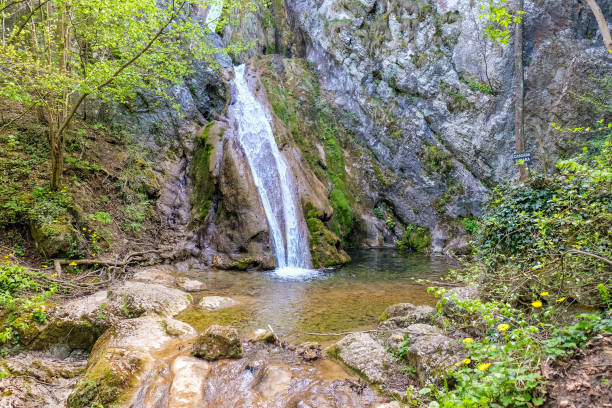
istockphoto.com 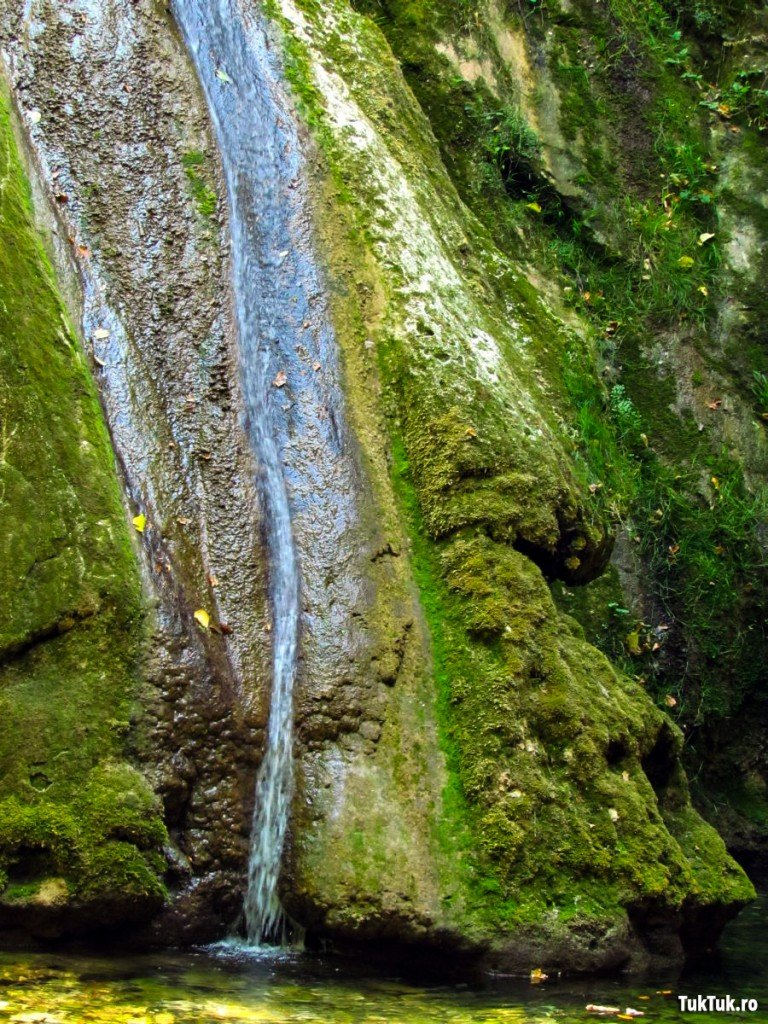
tuktuk.ro












